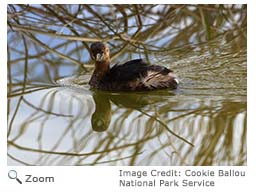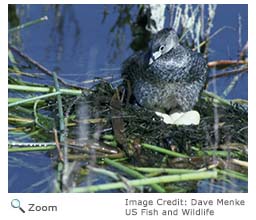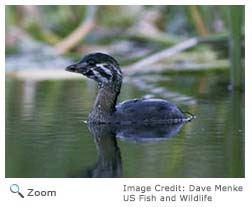Pied-billed Grebe - Podilymbus podiceps |
|||||||||||
Description Range Habitat |
DietThe pied-billed grebe eats mostly aquatic invertebrates, although it sometimes eats fish, reptiles, and amphibians. Life Cycle BehaviorThe pied-billed grebe is an excellent swimmer and diver. It often dives to evade predators. In fact, another name for the pied-billed grebe is the Hell-diver.
|
||||||||||
Audio Credit: xeno-canto.org Bernabe Lopez-Lanus |
|||||||||||


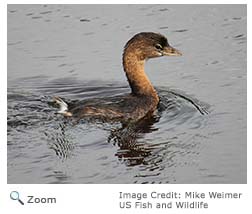
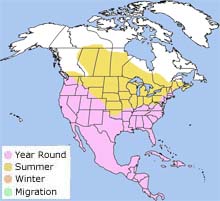 The pied-billed grebe's range covers most of central and eastern Canada and all of the United States. In the northern parts of its range, the pied-billed grebe will migrate to areas with open water. It lives year-round in the southern part of its range, as long as the water doesn't freeze over!
The pied-billed grebe is threatened in New Hampshire.
The pied-billed grebe's range covers most of central and eastern Canada and all of the United States. In the northern parts of its range, the pied-billed grebe will migrate to areas with open water. It lives year-round in the southern part of its range, as long as the water doesn't freeze over!
The pied-billed grebe is threatened in New Hampshire. 